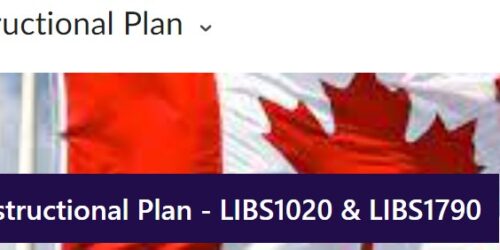Group Discussion
Ideas for starting small group discussion, keeping it going, and ending with a formative assessment of student learning. Ideas may be adapted to any mode of delivery and to large class discussion.
Ideas to Get Group Discussion Started
These ideas can also be used to warm up for group discussion as a class.
- Conduct a poll: Allow students to share ideas anonymously or without speaking out: use note cards or a polling tool for anonymous answers.
- Observe first: Show a quote, video, or image (describe it), and ask students to share what they notice or what are key points. Then, ask discussion-oriented questions: the “why,” “how,” or “so what” of the artifact.
- Reflect first: Pose a question and give students 1 minute to record and answer, then get volunteers to share ideas. Or, use a think-pair-share activity and put students in small groups to share answers.
- Brainstorm: Ask students to share ideas related to a discussion topic, write them all down, then categorize ideas by themes.
- This or That: Ask students to choose one of two options, situations, or actions. After students make a silent choice or a vote, invite students to share their choices and why.
- Pose a question or provocative statement: Ask students to take a position or weigh the pros and cons, then discuss why.
- Give a list of topics: Ask students to choose or rank a list of topics or questions they would prefer to discuss.
- Give a problem or scenario: Ask students to review, and then in group students discuss how they would solve or respond.
Tip: Put students in discussion groups before you share instructions and your expectations for a group discussion activity. Keep discussion groups small to encourage sharing and accountability.
Review more ideas for different types of discussion-based active learning ideas.
Ideas to Keep the Group Discussion Going
- Provide students in advance with the discussion questions or topics. Ask students to bring notes or readings to refer to during the discussion.
- Encourage various answers and perspectives and invite them to build on each other’s ideas.
- Assign and rotate discussion roles (e.g., recorder, timer, facilitator, reporter, “devil’s advocate.”)
- Keep discussion activities closely time-bound. Use multiple short discussions that scaffold rather than one long discussion period. See the Spectrum of Effective Questioning.
- Allow students to write down questions or answers on a whiteboard, digital whiteboard, or flip chart.
- Check in and monitor groups actively to ensure group discussion stays on track.
- Remind students that every person’s perspective is valuable. However, acknowledge that some students may be less comfortable sharing in group discussions.
- To avoid groupthink, invite groups to ask, “What haven’t we thought of yet?” or “What is an alternate perspective we can take?”
- In a second round, have two groups join to share their ideas or use a jigsaw.
- Monitor the discussion for signs of becoming an argument, getting off track, or deteriorating.
Tip: Use a timer. Give a 1- or 2-minute warning when pausing or ending group discussion to give students a chance to wrap up.
As the discussion facilitator, it’s important to balance student voices during the discussion. See this post for more Ideas for Encouraging Equitable Participation in Class Activities and Discussion.
Ideas to End and Assess Learning
- Bring closure to the discussion by announcing that the discussion is ending.
- Encourage groups to share their most significant or unexpected insights, findings, examples, or follow-up questions.
- Ask for final comments or questions.
- Provide closing remarks emphasizing key points and themes, acknowledging insightful comments and how the discussion relates to lesson outcomes and upcoming assignments.
- Give positive reinforcements for contributions made to the discussion.
- Ask groups to share their notes or whiteboards.
In a formative post-assessment activity, you can ask students to write and share with you a short reflection about
- how their thinking changed during the discussion
- one thing they contributed to the discussion (active listening counts!)
- one question that is still unanswered, or one new question that emerged
- what they thought of the quality of the discussion (e.g., stayed on track, everyone spoke, kept on time)
- one thing that could be done to improve the group discussion next time
Witten responses can be shared in class on paper, in a text chat, with a poll or survey, or in an asynchronous discussion or email following class.
Learn more about assessing review and reflection.
Final Thought: Limit Your Own Involvement
If you want students to focus on engaging meaningfully in discussions with each other, it is important to allow students to develop their own ideas and respond to one another. Here are some ways to encourage peer-to-peer discussions:
- Be explicit about the goals of the student-focused discussion, your role, and the students’ roles. Ask students to respond directly to each other and use each other’s names.
- Announce you will be the note-taker to keep track of what students say, then provide a summary.
- Move away from the head of the classroom or table, or adjust the room so that students can face each other and you can be part of the discussion.
- Ask for a certain number of groups to share before you move on, and wait for them.
- Avoid responding to every group’s contribution.
This advice may differ somewhat for asynchronous discussion, in which faculty might wish to take a more active role in leading and supporting discussion in Discussion Forums.
More on Discussion in Teaching
See these Conestoga Library resources for more information and ideas.
Bender, T. (2003). Discussion-based online teaching to enhance student learning : theory, practice, and assessment. Stylus Pub.
Brookfield, S., & Preskill, S. (2005). Discussion as a way of teaching : tools and techniques for democratic classrooms (2nd ed.). Jossey-Bass.



